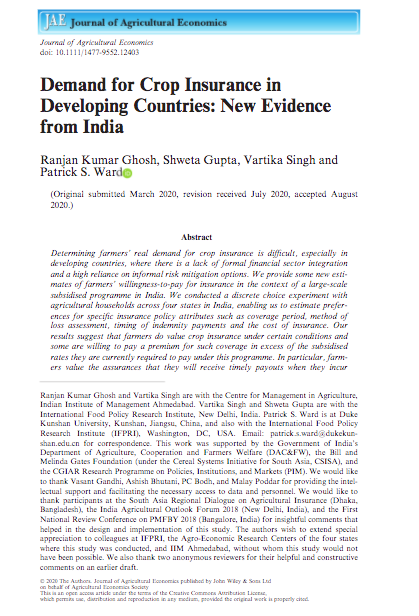Demand for Crop Insurance in Developing Countries: New Evidence from India

ABSTRACT
Determining farmers’ real demand for crop insurance is difficult, especially in developing countries, where there is a lack of formal financial sector integration and a high reliance on informal risk mitigation options. We provide some new estimates of farmers’ willingness‐to‐pay for insurance in the context of a large‐scale subsidised programme in India. We conducted a discrete choice experiment with agricultural households across four states in India, enabling us to estimate preferences for specific insurance policy attributes such as coverage period, method of loss assessment, timing of indemnity payments and the cost of insurance. Our results suggest that farmers do value crop insurance under certain conditions and some are willing to pay a premium for such coverage in excess of the subsidised rates they are currently required to pay under this programme. In particular, farmers value the assurances that they will receive timely payouts when they incur losses, and may not have a strong preference for the method with which losses are assessed. On the other hand, farmers are quite sensitive to coverage periods. Our baseline assessment shows that when optimised to farmer requirements, there can be a sizeable demand for crop insurance by developing country farmers.